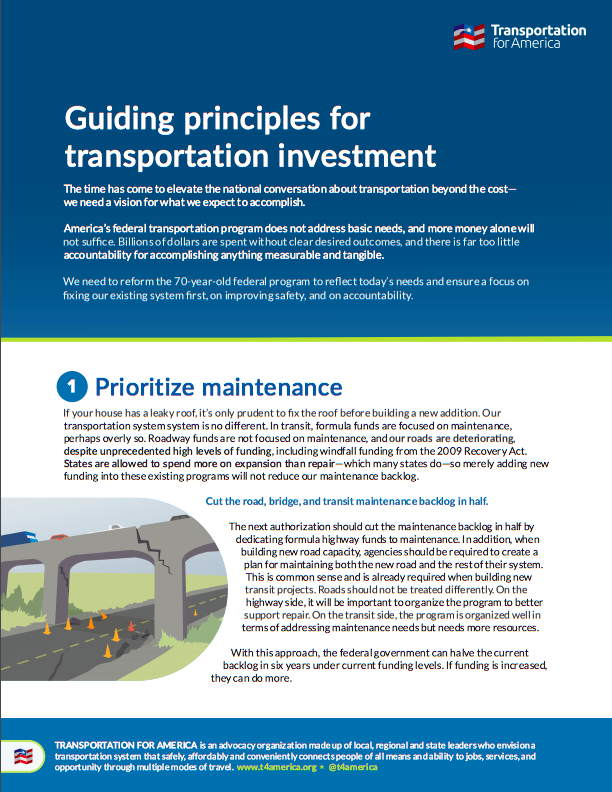After city council action, Indy voters will decide on expanding and improving regional transit this November
Indianapolis took another big step forward this week in their ongoing efforts to expand and improve transit service across the city and region. Monday night, the Indianapolis City-County Council voted to place a measure on this November’s ballot to allow voters to decide whether or not to raise new funding for transit service.
What progress did states make this year on raising new funding or improving policy?
Nearly all state legislatures have adjourned for the year. Here’s our regular look at the progress made in states working to create more transparency, build more public trust in transportation spending, or raise new money.
Watch the recording of T4America’s discussion on USDOT’s rulemaking on traffic congestion performance measures
Yesterday, Transportation for America hosted an online event to discuss USDOT’s recently announced transportation performance rulemaking on measuring traffic congestion and its implications for communities nationwide. The rule will govern how states and metro areas will have to measure and address congestion, along with freight movement and emissions. These new requirements will help measure what America’s […]
When it comes to traffic congestion, we need to measure more than just vehicles
Last week, USDOT issued a draft rule that will govern how states and metro areas will have to measure and address congestion, along with other metrics like freight movement and emissions. However, the rule as it is currently written would measure success in outdated ways. Old measures leads to old “solutions,” like prioritizing fast driving speeds above all other modes of transportation and their associated benefits.
Senate transportation appropriations bill adheres to local leaders’ call to fund TIGER, public transit and passenger rail
The annual transportation and housing appropriations bill – known as T-HUD – was approved last week by the Senate Appropriations Committee and contains good news for transportation.
Join us as we break down FHWA’s most recent rulemaking on measuring traffic congestion
Do you want a transportation system that makes you count? Join Transportation for America for a free, public webinar on Wednesday, April 27 at 1:00 p.m. EST to discuss the recently announced Federal Highway Administration (FHWA) national transportation performance rulemaking on measuring traffic congestion and its implications for communities nationwide.
Ten things to know about USDOT’s new proposal for measuring traffic congestion
For the first time, USDOT has released new requirements for how states and metro areas will have to measure traffic congestion. While the new rule marks a continued, necessary shift to assessing what our federal transportation dollars actually accomplish, this proposal as introduced doubles down on outdated measures of congestion that will push local communities to spend billions of dollars in vain attempts to build their way out of it.
Breaking news: USDOT releases draft rule for measuring congestion
A new federal proposal governing how states and metro areas will be required to measure congestion was just released early today. Our brief analysis finds that though there’s potential for improvement with how the rule is worded, it would still push local communities to waste time and money attempting to build their way out of congestion by using a measure of traffic congestion that’s narrow, limited and woefully out of date.
Smart Growth America welcomes Lynn Peterson as new senior transportation policy advisor
Smart Growth America and Transportation for America are pleased to announce today the hiring of Lynn Peterson, former chief executive officer of the Washington State Department of Transportation (WSDOT), as senior transportation policy advisor for Smart Growth America. Learn more about Lynn’s experience in Washington and what she hopes to do in her new position in a short Q&A below.
Will pending federal transportation rule double down on outdated view of congestion?
USDOT is on the cusp of releasing crucial directions for how states and metro areas will have to measure traffic congestion. The new rule could push local communities to try in vain to build their way out of congestion, or mark a shift toward smarter approaches like shortening trip times, rewarding communities that provide more options or better accounting for other travel modes and telecommuting.





